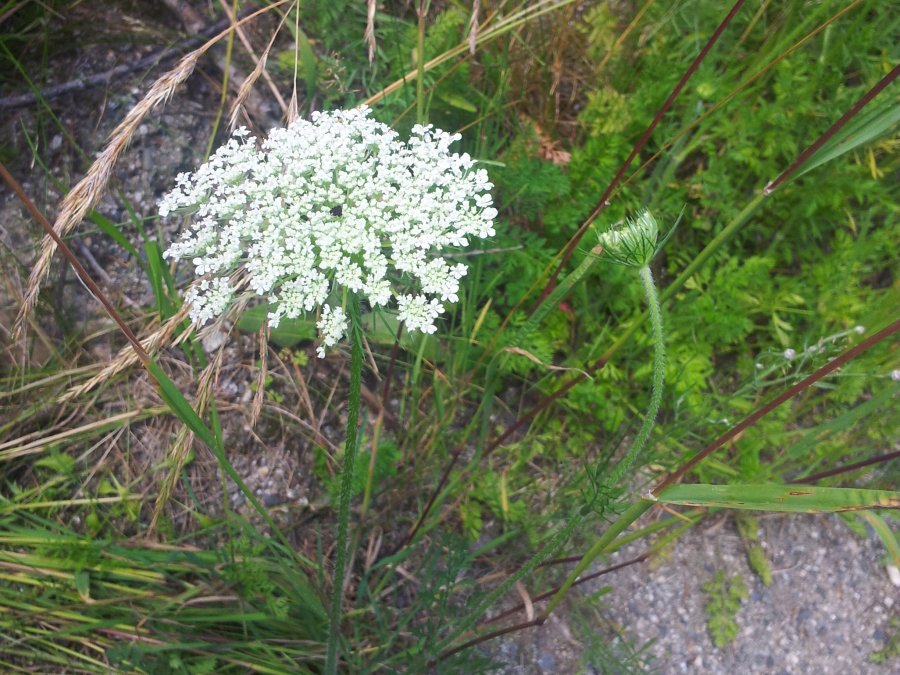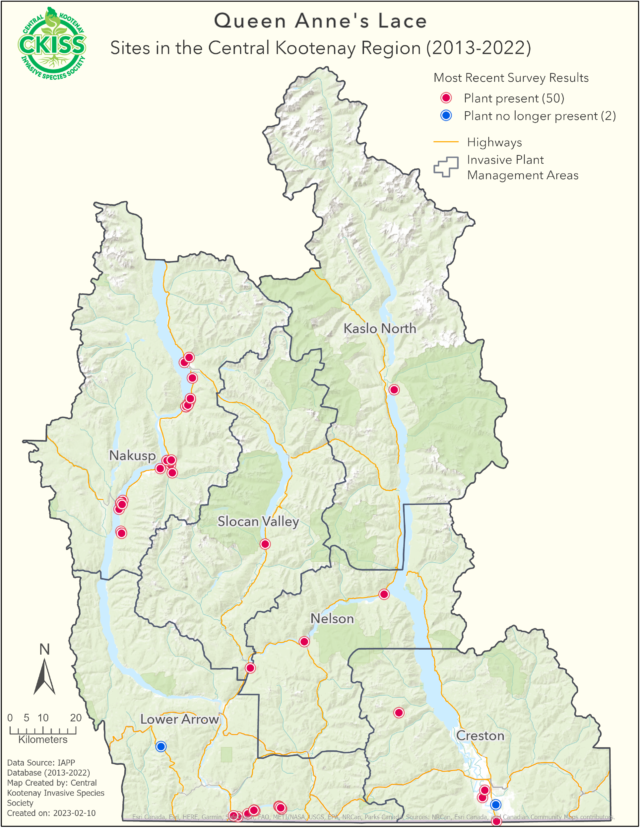Daucus carota
Description
- Also called “wild carrot”
- Introduced from Europe in the 1700’s.
- Grows up to 3 to 5 feet in height.
- White umbel of flowers that starts out curled up and opens as the flowers mature.
- These white flowers look similar to other species in the Carrot family.
- A distinguishing feature is the centre flower of a Queen Anne’s Lace umbel will often be purple, red or black.
- Umbel has a whorl of green bracts underneath.
- Flowering occurs from July to September.
- Long taproot that smells like carrots (note that wild carrot is mildly toxic, and many other members of the carrot family are very toxic, so never consume wild species from this family, and handle with care!).
- Found in gravelly or sandy soils and in wet areas.
Consequences of invasion
- Displaces native plant species, particularly grasses and forbs.
- Impacts crop and hay yields in cultivated fields.
- Produces off-tasting milk in dairy cattle after consuming large quantities.
Status in the CKISS region
- Queen Anne’s lace is currently listed as Strategic Control on the CKISS Annual Priority List.
- It is widespread in the Nakusp and Lower Arrow Invasive Plant Management Areas (IPMAs)
- While it is not realistic to eradicate this species at the landscape level in these areas, this species may be treated at high priority sites (e.g. wildlife habitat, corridors of spread, adjacent to agricultural land, restoration sites, etc.) based on specific land management objectives.
- In the remaining IPMAs of our region, there is insufficient information about this species’ distribution, impacts, potential for spread, and/or feasibility of control to assign it a management priority. CKISS plans on carrying out inventory as required, monitoring known locations, and/or finding out more information from other regions.
- To learn more about how CKISS classifies and manages invasive species, see our Invasive Species Priority Lists page.
Integrated pest management options
- Prevent establishment of this plant by keeping equipment clean to prevent transport of seeds, and maintaining healthy desirable vegetation rather than leaving soil bare.
- Mow low to the ground after stems elongate but before flowering.
- Small infestations may be pulled by hand. Wear gloves as this plant can cause skin irritation in some people.
- Plowing and replanting infested areas will help to decrease the infestation.
- Chemical treatments may be an option. Consult a professional to determine whether this is an option for you.
- Be PlantWise! Choose non-invasive plants for your garden.


